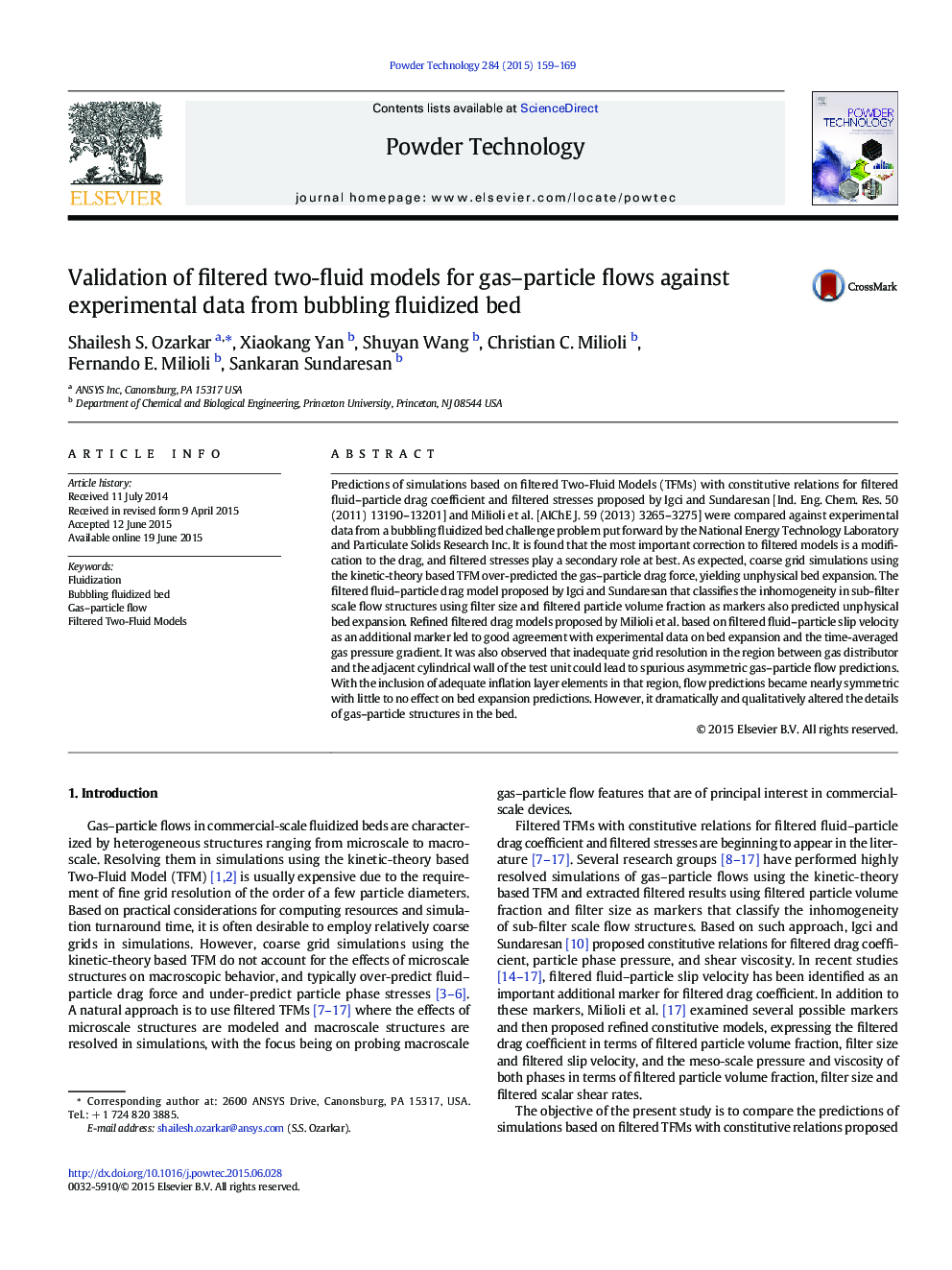| کد مقاله | کد نشریه | سال انتشار | مقاله انگلیسی | نسخه تمام متن |
|---|---|---|---|---|
| 235337 | 465634 | 2015 | 11 صفحه PDF | دانلود رایگان |
• Predictions of filtered Two-Fluid Models (TFMs) were compared against experimental data.
• Constitutive relations proposed by Igci and Sundaresan, and Milioli et al. were tested.
• Igci and Sundaresan filtered TFM predicted unphysical bed expansion.
• Milioli et al. filtered TFM predicted correct bed expansion under different flow conditions.
Predictions of simulations based on filtered Two-Fluid Models (TFMs) with constitutive relations for filtered fluid–particle drag coefficient and filtered stresses proposed by Igci and Sundaresan [Ind. Eng. Chem. Res. 50 (2011) 13190–13201] and Milioli et al. [AIChE J. 59 (2013) 3265–3275] were compared against experimental data from a bubbling fluidized bed challenge problem put forward by the National Energy Technology Laboratory and Particulate Solids Research Inc. It is found that the most important correction to filtered models is a modification to the drag, and filtered stresses play a secondary role at best. As expected, coarse grid simulations using the kinetic-theory based TFM over-predicted the gas–particle drag force, yielding unphysical bed expansion. The filtered fluid–particle drag model proposed by Igci and Sundaresan that classifies the inhomogeneity in sub-filter scale flow structures using filter size and filtered particle volume fraction as markers also predicted unphysical bed expansion. Refined filtered drag models proposed by Milioli et al. based on filtered fluid–particle slip velocity as an additional marker led to good agreement with experimental data on bed expansion and the time-averaged gas pressure gradient. It was also observed that inadequate grid resolution in the region between gas distributor and the adjacent cylindrical wall of the test unit could lead to spurious asymmetric gas–particle flow predictions. With the inclusion of adequate inflation layer elements in that region, flow predictions became nearly symmetric with little to no effect on bed expansion predictions. However, it dramatically and qualitatively altered the details of gas–particle structures in the bed.
Figure optionsDownload as PowerPoint slide
Journal: Powder Technology - Volume 284, November 2015, Pages 159–169
